My night at Lumikha, a Filipino supper club
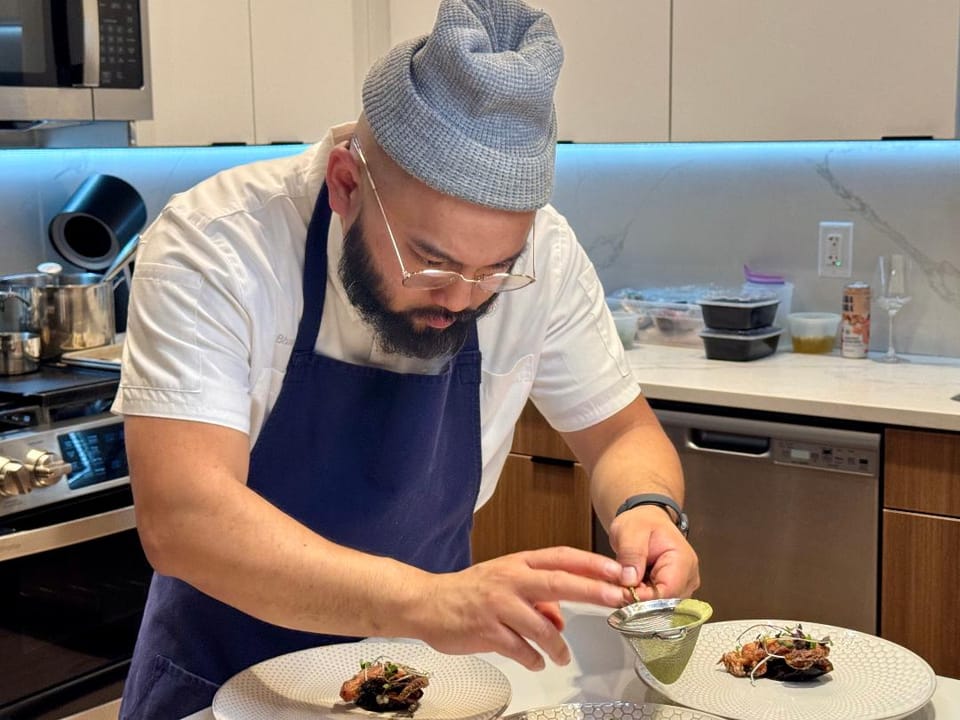
It felt like the beginning of a side quest.
Nine of us, armed with detailed instructions and an entry code, gathered in the lobby of a downtown Houston highrise apartment building last Thursday evening. Two were good friends of mine. The other six were strangers.
We had signed up for a Filipino tasting menu devised by chef Bham Garcia, an alumnus of high-flying kitchens like Alinea, Guy Savoy and Robuchon. He calls it Lumikha, which is Tagalog for "to create."
As we milled about in the sleek, cavernous space, our guide appeared, wearing a grey knitted cap that looked a little medieval. He urged us to introduce ourselves and said something about making memories with those we knew and those we didn't. Fresh from my East End hermitage, I died a little inside.
Then he escorted us in two groups up, up, up the elevator into a high-ceilinged studio apartment centered on the cleanest kitchen I ever saw, blindingly white and rimmed in ice-blue neon. In the center stood the chef: bearded, bespectacled, clad in another knitted grey hat that rose up in a volcano silhouette, with an indented caldera.
I'm not a gamer. Wrong generation. But the evening that ensued felt like a mystery tour studded with gemlike treasures, deft wizardry and quirky social engineering that turned our random group into a cheerful unit. Around our long horseshoe of a table, I could feel my initial resistance dissolving like the mist from chef Bham's nitrogen canister.
He really doesn't need modernist pyrotechnics to impress. My palate reeled at the impact of our first three courses: ingenious, bite-or-two reworkings of classic Filipino flavors, ingredients and dishes.
Popping a crisped "Texas Toast" round into my mouth, I could feel my eyes widening as the sharply astringent edge of a turnip cube marinated in coconut vinegar collided with a hillock of briny Osetra caviar. Poised on a white ceramic sampaguita blossom—the jasmine variant that is the national flower of the Philippines—this offering was as memorable as it was beautiful. The shivery flavors and incisive textures left me hungry for more.
"Now that is an appetizer," I said to myself.
And so it went. A remake of kinilaw, a species of Filipino ceviche or raw dish, sparkled under pearls of trout roe. Its lively mesh of tiny New York strip cubes, marinated in soy and calamansi orange , was deepened with the distinctive umami tang of back garlic aioli. It sat in an intricate tartlet based on pan de sal, a type of soft roll here transfigured into a hardened, structural form.
Next up, a morsel of marinated beef on crunchy fried garlic rice. It came with a soft quail egg and black-truffled caviar on top, its explosive flavors fueled by (and I can't believe I am writing this) the chef's own spicy truffled banana ketchup.
"This is the best bite I've eaten all year," I announced to anyone who would listen. It was, Bham told us, the classic Filipino breakfast called tapsilog in miniature form. Nigiri form, to be precise—a nod to the chef's 3-year stint at Uchi, his next posting after the demise of Aqui, where he worked when he first came to Houston from Chicago.
Please note: I am OVER truffles and caviar on everything, but here...I bought in. And in a way, the chef's use of fish eggs in various contexts fits the menu's frequent oceanic touches. After all, the Philippines is an archipelago of more than 7000 Pacific islands.
A huge raw scallop in a coconut-cream bath spiked with dots of chili oil was a revelation to this scallop skeptic: lush, vibrant, not too sweet (my usual objection). It hid a trove of the pork that traditionally anchors the regional Filipino dish called Bicol Express—here transfigured into a form that was gorgeous to look at, and to taste. The pork itself had been cooked sous vide, then cubed, fried and tossed in the fermented shrimp paste called bagoong, so that land and sea met without a hitch.
Our Kare Kare course used intricately plated octopus and eggplant in a rarefied version of the peanut-sauced Filipino stew that's traditionally based on oxtails and tripe.
Next arrived a take on the street food dessert called taho: here a dark, glittering mesh of tapioca balls and coconut crème brûlée, its gentle sweetness tempered with Filipino rum and the artisanal coconut-ash sea salt called Asin Tibuok—an imposing hunk of which sat on the kitchen counter in the shape of a dinosaur egg, cased in clay, like some implacable god.
Finally came chef Bham's take on Halo Halo, the rambunctious Filipino dessert of gelatin, crushed ice, coconut milk and all manner of add-ins—in this case, quivery blobs and cubes of gelatin scattered with pinipig, baby crisps of flattened and toasted glutinous rice. Everything shone in its bubbled-glass bowl.
Here's where the nitrogen canister appeared and an icy coconut sorbet took form, great billows of white mist tumbling over the counter and cascading toward the floor. It was fun in a boys-and-their-toys way.
So was the spoken-word rap poem delivered by our original sherpa for the evening, Rob Lucero, who turned out to be a youth minister in his other life. Suddenly the emphasis on fellowship and community on Lumikha's website made sense. I was no longer spooked. Instead, I found the vibe endearingly earnest, a quality that has fallen from favor in these ironic, cynical times.
That the whole provocative Lumikha experience costs just 85 bucks, plus tax and 20% service charge, makes it a bargain among Houston's pricy tasting-menu special events and speakeasy-type omakases. Lucero and a second host, Ron Villaraza. poured a perfectly acceptable oaky white and a deliciously funky red throughout the meal, on a complimentary basis with no expensive pairing surcharge. Guests have the option to BYOB should they wish.
Also on offer was Borjomi, a naturally carbonated mineral water from Georgia (the country), that I immediately put on my favorites list. Bottled-water achievement unlocked.
Bham Garcia hopes to open a brick-and-mortar restaurant here, and I departed hoping that will come to pass, the sooner the better. He is hugely talented. He deserves investors.
Go taste for yourself. Pre-paid reservations for Thursday, Friday or Saturday can be made through the link on their website. Last I looked, there were seats available in June and July. Note that they advertise 5 courses, putting the first three fabulous starters under a single umbrella. I am much more inclined to give each one the dignified status of being its own course.

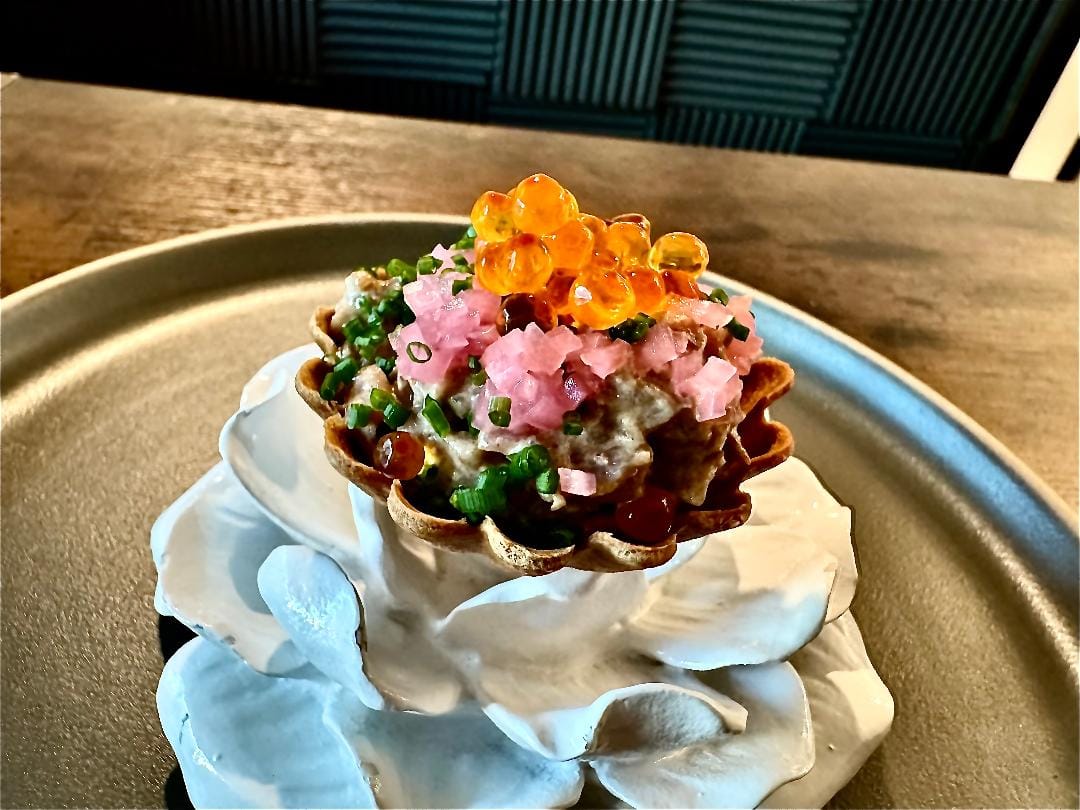


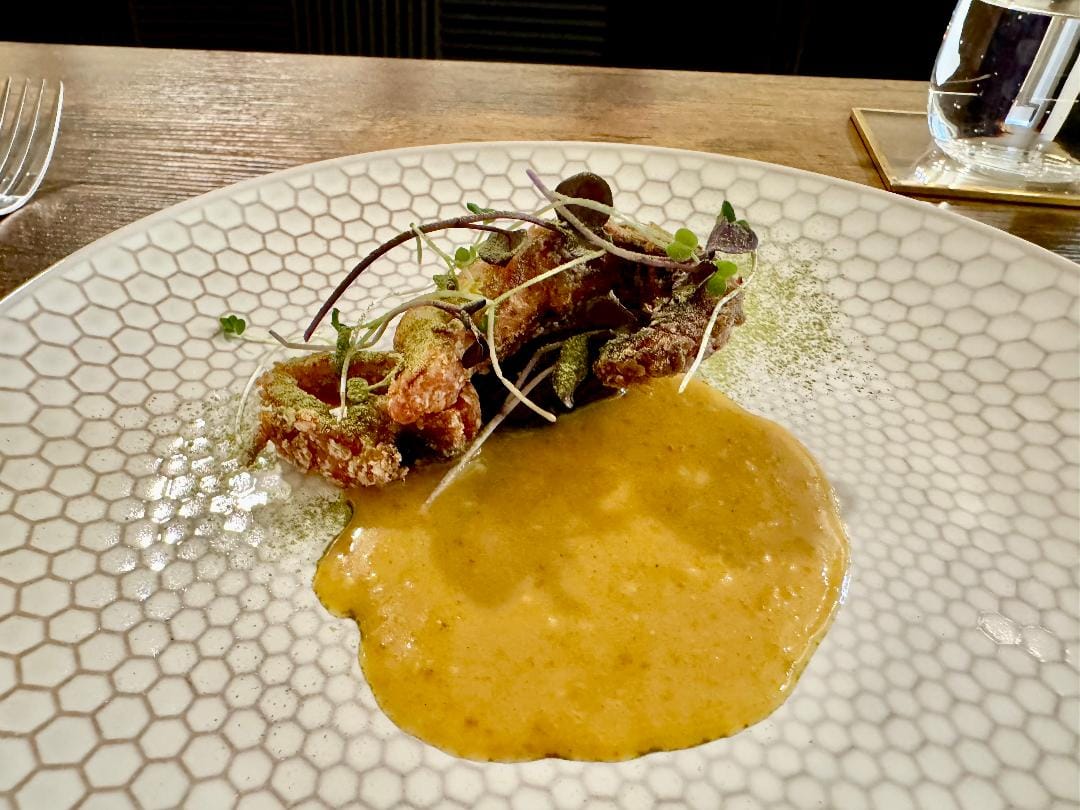
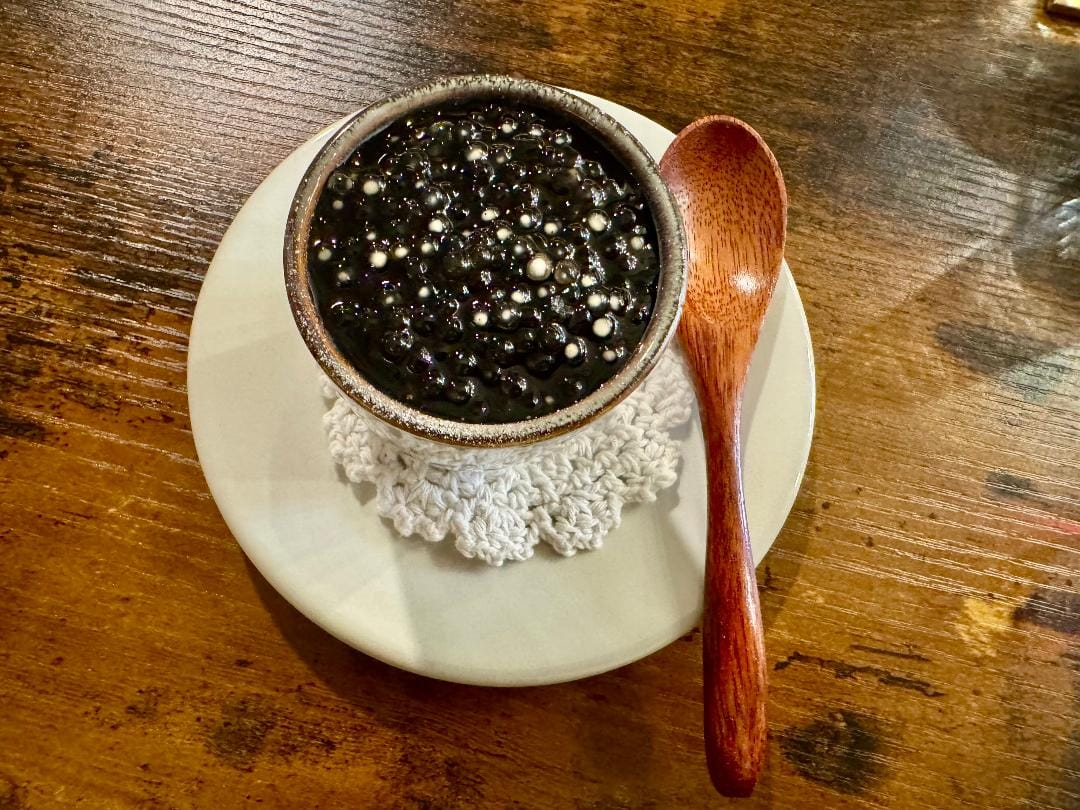

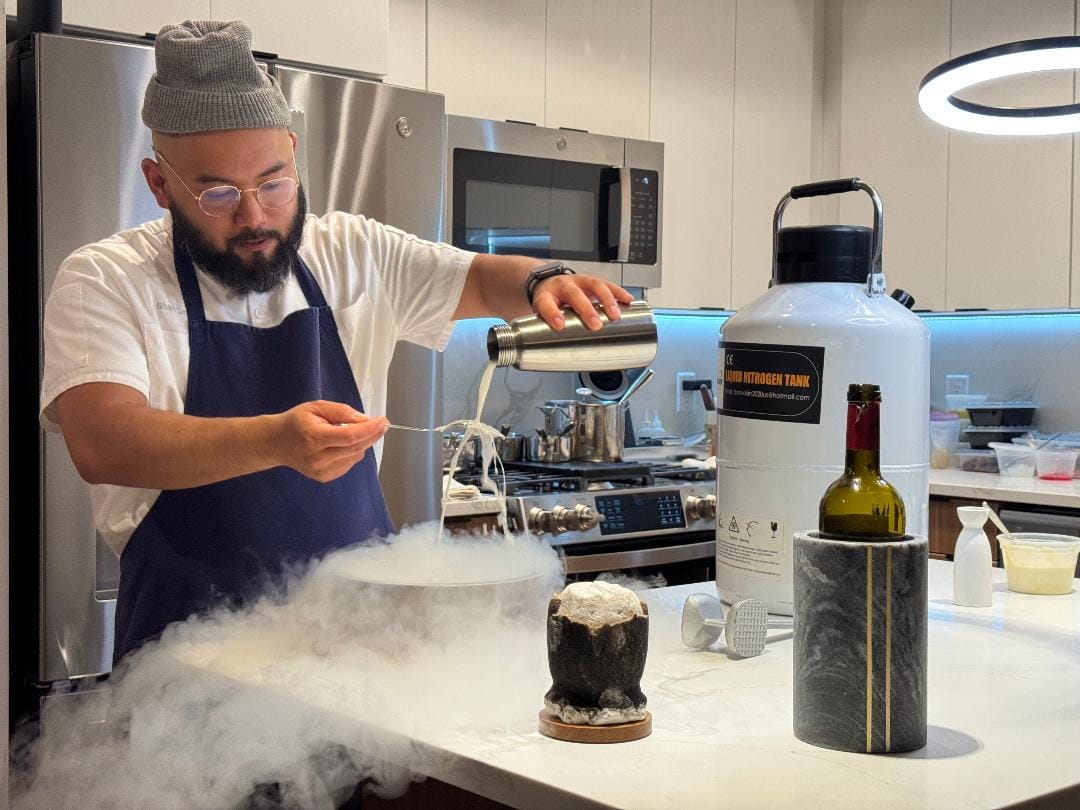
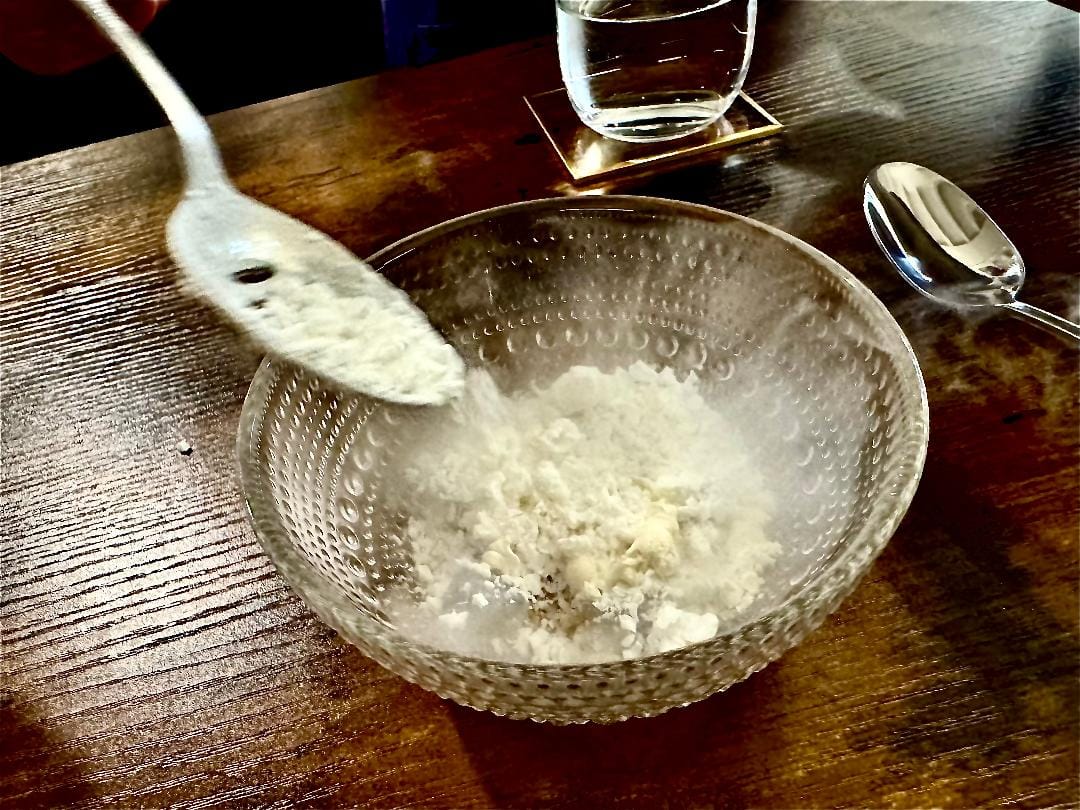
L to R, from top: Sampaguita of turnip and Osetra; kinilaw of tuna, black garlic and trout roe; topsilog of beef, quail egg and truffled caviar on crisped garlic fried rice; Bicol Express with scallop, coconut cream and shrimp paste; kare kare of octopus, eggplant and peanut sauce; tare tare of tapioca pearls, rum and Asin Tibuok artisanal sea salt; halo-halo dessert base of gelatins and pinipig; chef Bham making coconut sorbet; the final assembly of the halo-halo dessert. Photos by Alison Cook.
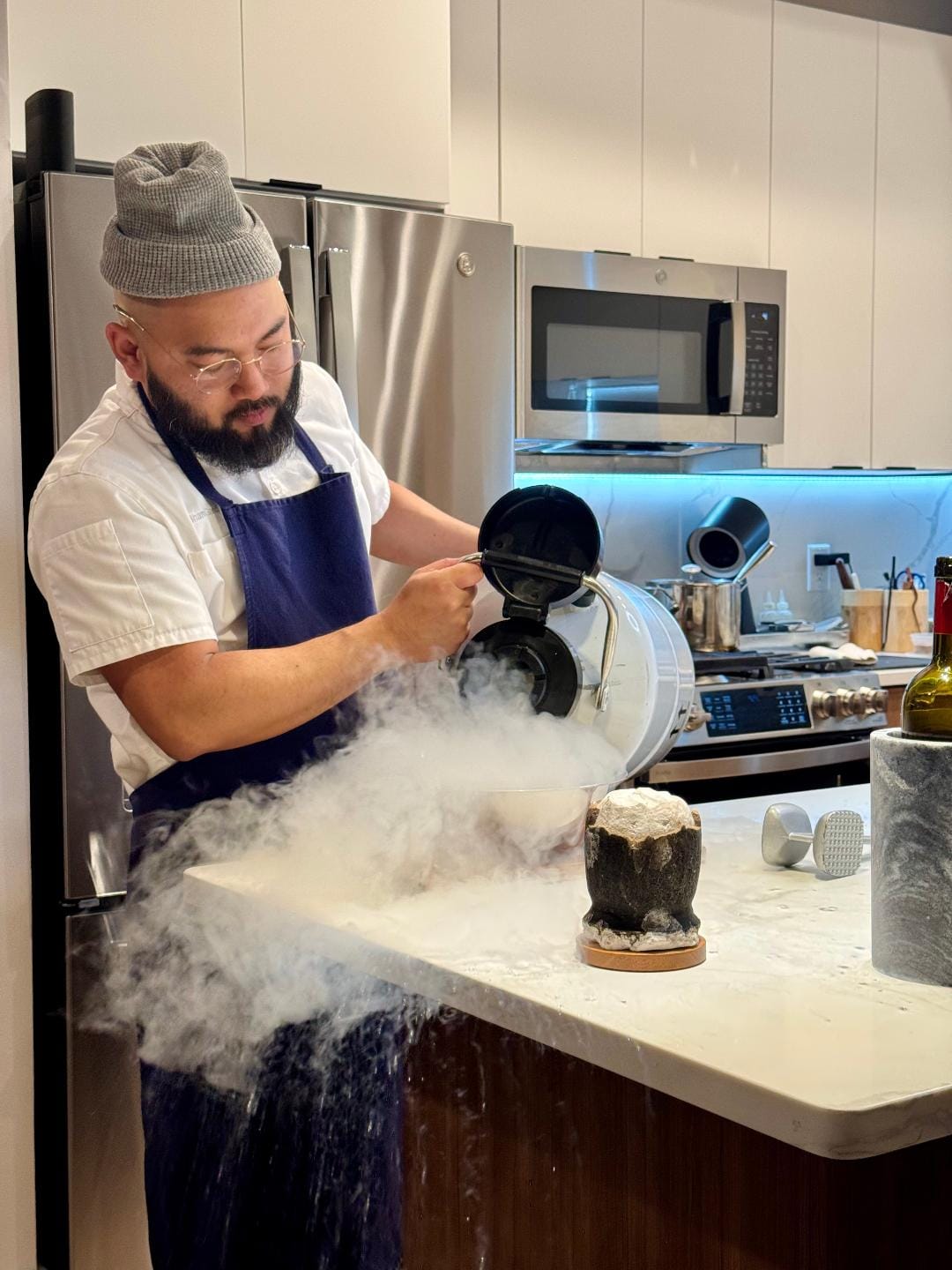

Member discussion